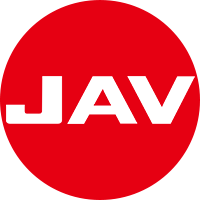
The Evolution of Interactive Displays: From Traditional Whiteboards to Smart Boards
The education and business landscapes have undergone significant changes in the past few decades, and one of the most impactful innovations in these sectors is the development of interactive displays. The traditional whiteboard, which for years served as the primary tool for teaching and collaboration, has given way to the more advanced and versatile smart board. This evolution is not just about a new technology replacing an old one—it's about a shift toward more engaging, dynamic, and efficient ways to communicate, learn, and collaborate.
The Beginning: Traditional Whiteboards
For much of the 20th century, traditional whiteboards were the go-to tool in classrooms and offices around the world. Teachers would use markers to write lessons, solve problems, and engage with students in an interactive way. Likewise, in business meetings, whiteboards served as a central hub for brainstorming sessions, idea development, and project planning.

However, despite their widespread use, traditional whiteboards had limitations. They were static, prone to damage, and required the use of physical markers that would eventually dry out or get lost. Furthermore, the capacity for storing information was minimal, and sharing content beyond the board itself involved additional resources, such as photocopying notes or manually transcribing ideas onto digital platforms.
The Advent of Digital Whiteboards
The first significant leap forward came with the introduction of digital whiteboards in the late 1990s and early 2000s. These whiteboards used electronic sensors to capture content written with special pens, and then transferred it to digital systems for easy saving, sharing, and editing. This offered more flexibility, as users could store, modify, and send their content to others via email or other digital platforms.
However, while digital whiteboards were an improvement, they still operated largely as an enhanced version of the traditional whiteboard. Users still had to rely on physical writing instruments, and the experience was still somewhat disconnected from other forms of digital interaction.
The Rise of Smart Boards
The real game-changer arrived with the invention of the smart board. This innovation is much more than just a "digital whiteboard." Smart boards integrate cutting-edge technology like touchscreens, gesture control, and often even AI-powered features, to create a fully interactive and dynamic experience.

Unlike traditional or even digital whiteboards, smart boards are designed to be an all-in-one solution for teaching, presenting, and collaborating. Their main features include:
-
Touchscreen Capabilities: Smart boards operate with touch-sensitive screens, allowing users to directly interact with the display. This interactivity makes it easy to manipulate data, draw diagrams, and highlight important points in real-time.
-
Multi-Device Integration: Many smart boards can connect with a wide range of devices—smartphones, tablets, laptops—allowing seamless integration of content from multiple sources. Teachers and presenters can pull up documents, media, or live feeds without ever leaving the board.
-
Collaborative Tools: One of the most significant advancements in smart boards is their ability to support collaborative efforts. Multiple users can interact with the board simultaneously, either in person or remotely. This is especially beneficial in educational settings, where students can collaborate on projects or solve problems together, even if they're not in the same room.
-
Cloud Connectivity: Smart boards allow easy access to cloud-based storage services. This means that everything created or displayed on the board can be saved, shared, and accessed later, reducing the need for paper copies and manual note-taking.
-
AI Integration: Some smart boards now feature artificial intelligence tools, such as voice recognition, auto-transcription, and real-time translation. These technologies enhance the user experience by making it easier to capture and organize information.
The Impact on Education
In the education sector, the evolution from traditional whiteboards to smart boards has revolutionized the learning experience. Where traditional whiteboards were passive tools, smart boards enable students to actively engage with the lesson. Teachers can create dynamic, multimedia-rich lessons that include videos, interactive quizzes, and live feedback from students. This interactivity keeps students engaged and promotes better understanding and retention of the material.

For example, smart boards can be used for remote or hybrid learning, where students who are not physically present in the classroom can participate via video conferencing. This ensures that no student is left behind, regardless of their location. Moreover, smart boards are adaptable for various teaching styles—whether it's project-based learning, flipped classrooms, or traditional lectures.
The Impact on Business
In the corporate world, smart boards have become invaluable tools for collaboration, brainstorming, and presentation. Meetings and presentations are now more interactive, with teams able to collectively brainstorm, share ideas, and visualize concepts in real-time. Furthermore, with integrated video conferencing tools, companies can collaborate with remote employees or clients without leaving the meeting room.

Smart boards also enable easy sharing of documents and presentations, which can be instantly saved to the cloud or sent to participants via email. This helps streamline communication, increase productivity, and reduce the need for printing or excessive paperwork.
The Future of Interactive Displays
As technology continues to evolve, so too will the capabilities of smart boards. We can expect to see even more advanced AI integrations, such as voice assistants and automated content generation. Additionally, the development of new materials and touchscreen technologies could make smart boards more affordable and accessible to a wider range of users.
In the coming years, smart boards could become even more immersive, incorporating augmented reality (AR) or virtual reality (VR) features to further enhance learning and collaboration. The boundaries between the physical and digital worlds will continue to blur, creating new possibilities for both education and business.
Conclusion
The transition from traditional whiteboards to smart boards represents more than just a shift in technology—it signifies a deeper change in how we learn, collaborate, and interact with the world around us. While traditional whiteboards served their purpose for decades, smart boards have unlocked new levels of interactivity, accessibility, and productivity. As the technology behind these boards continues to evolve, we can only imagine the innovative ways they will shape the future of education and business.



